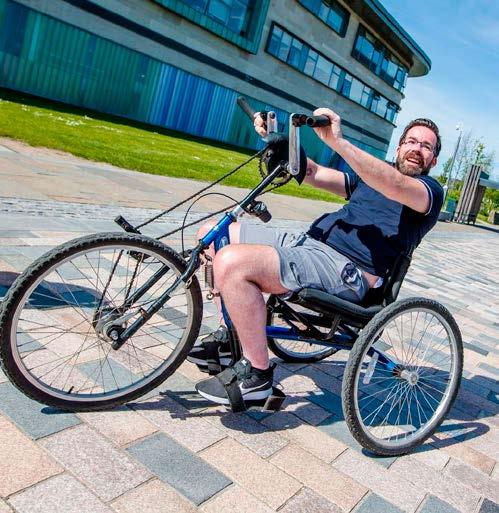
1 minute read
BIKE READY Support Resources – Buying a Bike Advice 1/2
from Shift resource pack
by Cycling UK
Outcomes
• Identify an appropriate type of bike.
• Setting a budget.
Exploration
Activity 1
Identify an appropriate type of bike
As a group discuss:
• Individual cycling needs
• What type of bike both e-bike and traditional
Discuss the pros and cons of:
• Town (also known as Low Step or Dutch style)
• Mountain
• Road/Touring/Gravel
• Hybrid
• Tricycle
• Cargo
• Tandem
• Hand
• Choosing where to purchase.
• Ways to pay for the bike.
Information
Cycling UK – which bike should I buy?
It is important to identify the intended use and select the type/s of bike that would meet that need. Do not underestimate the advice that can be received from your local bike shop, remind participants that they should ask plenty of questions concerning their chosen style of bike, as this is going to be the beginning of a long-lasting relationship. It is important to get it right the first time.
Exercise – prompting questions:
• Describe the first bike you ever owned?
• What was great about it?
• How is the bike that you own now is different from your first bike?
• Why did you buy the bike you now have?
Activity
2
Setting a budget
As a group discuss:
Starting budget for purchasing a bike. A bike can be purchased from around £200 from a bike shop which will come fully assembled and set up to ride.
Bikes that require self assembly can be cheaper however they require a certain level of skills and experience to set up correctly. For lower budgets, the second hand market could offer some bargains. As with all second hand purchases it’s on a buyer beware basis.
Many community groups throughout Scotland have Community Bike Projects/Sheds, some of these sell reconditioned bicycles back to their own communities. This is a great way to reduce your carbon footprint, help the environment and spend a little less.












